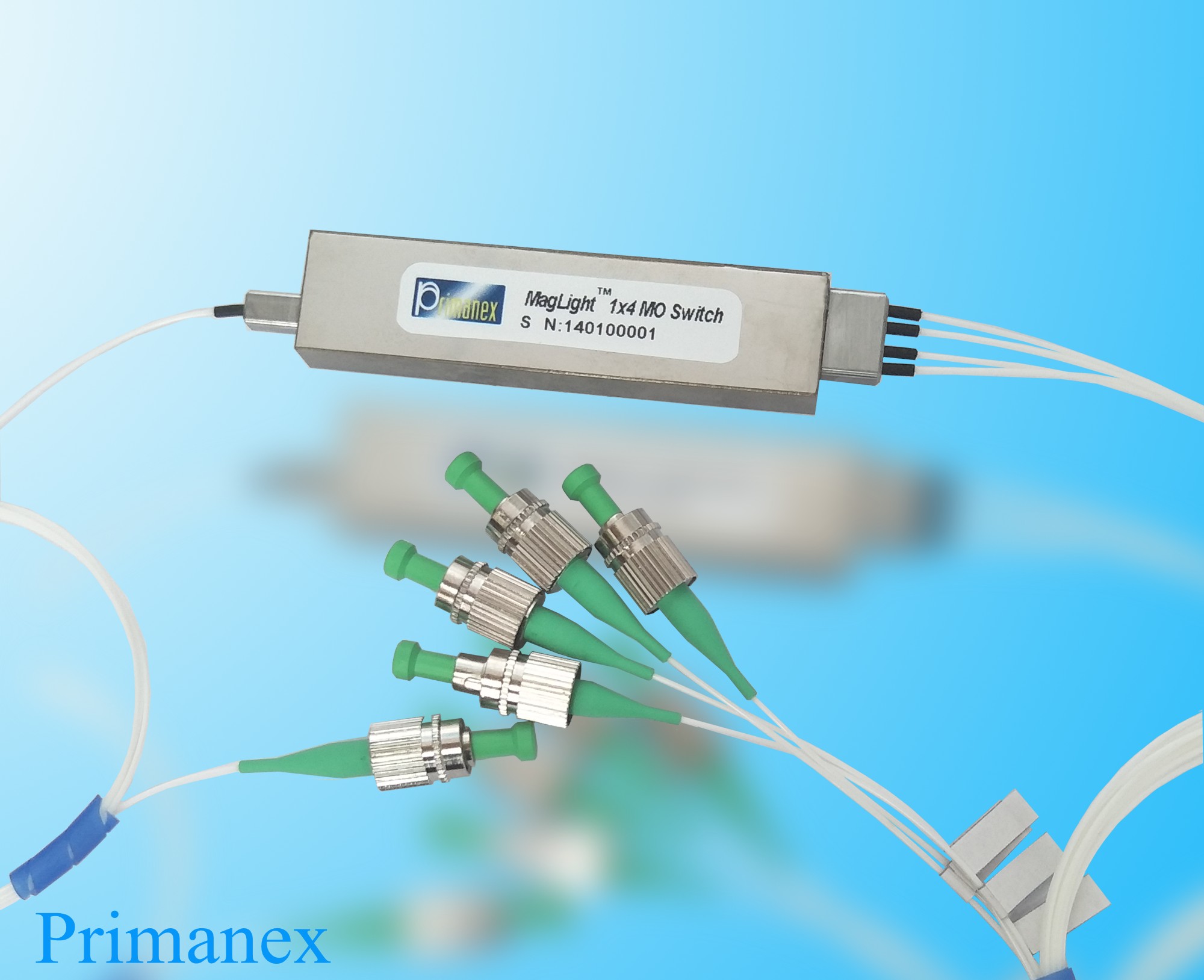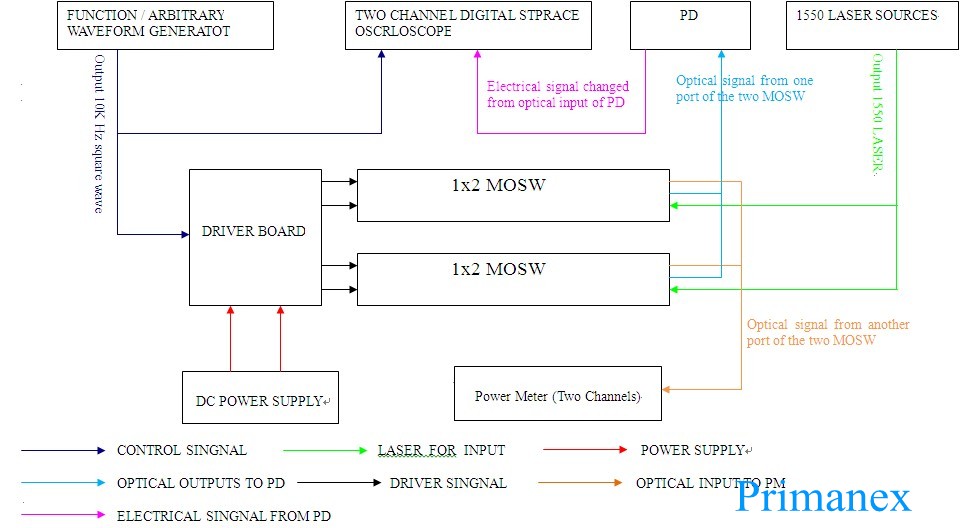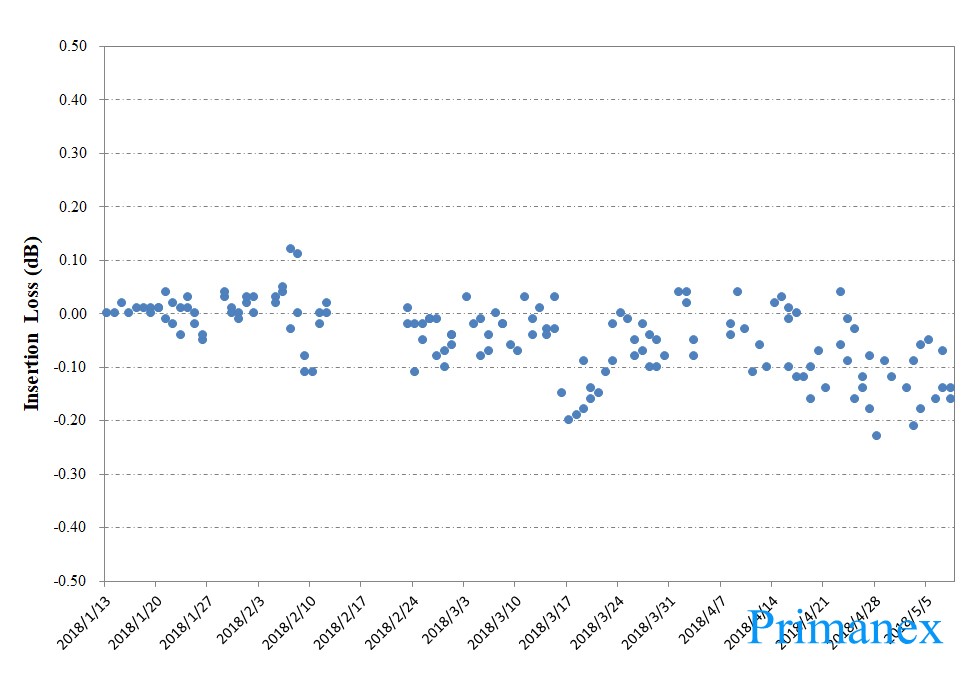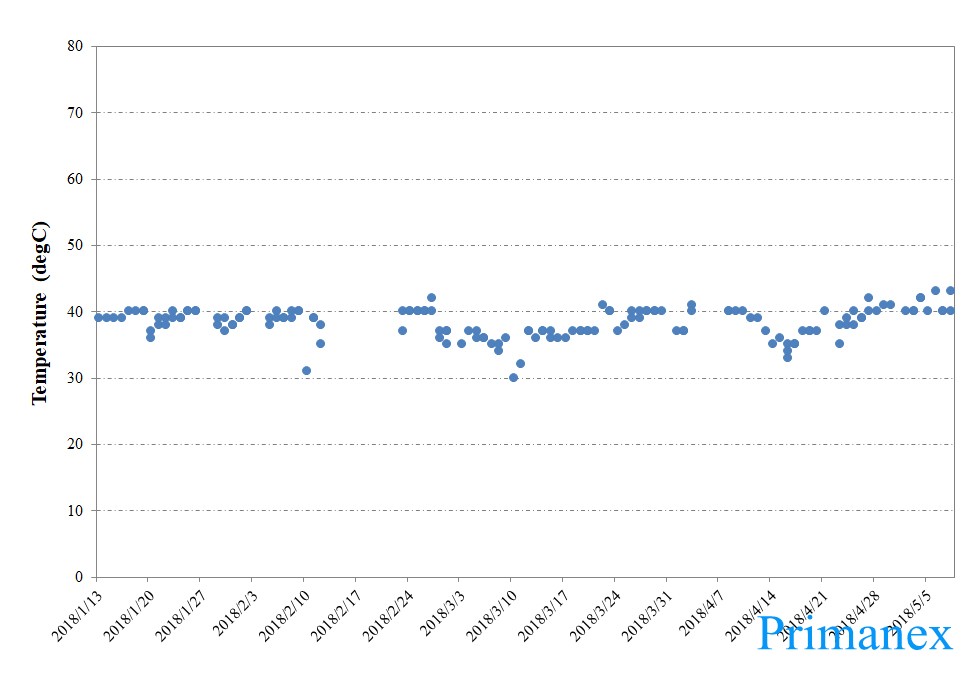September 20, 2018, Qingdao
Primanex, as a worldwide leader in magneto-optics (MO) technology for nearly twenty years, proudly announces that her prestigious MO switches pass 100-billion cycling test after in-situ monitoring of non-stop switching for four months. Its the longest experimental record as per cycling of optical switches for the worldwide photonics industry, which will enhance customers confidence towards implementing MO switches into highly demanding fields in terms of long-term reliability.

Figure 1: Newly promoted compact 1x4 MO switch
The design of the experiment is to in-situ monitor the DUTs (device-under-test) non-stop switching behavior in order to verify MO switchs life cycling limit. Fig. 2 illustrates the experimental layout. A function generator sends synchronized square wave triggering signals to both driving board of MO switches and oscilloscope. The driving board is to control the DUTs to switch at specific repetition frequency. A 1550-nm laser source launches light into the input port of the DUT, a fast photodetector is to receive light from one of the two output ports and directs the signal to the oscilloscope to observe the switching temporal behavior, while an optical power meter is to monitor the insertion-loss of the other of two outputs.

Figure 2: Experimental layout of in-situ cycling test
The experiment follows the traditional definition of switching cycle. Light launched into the input port of DUT exits from output port#1, is switched to output port#2, and then switched back to port#1, or vice versa, this is defined as one full switching cycle. Samples for the experiment are of high-speed version, and are cycled at 10-KHz repetetion frequency. The total of 100-billion cycles is therefore translated to a period of 116 days. Considering the relatively long period of up to 4 months, all equipments are powered up by UPS, a small portion of output from the laser source is monitored in order to normalize the long-term drifting of laser power, and a thermistor is attached to the housing of DUT to monitor the DUTs temperature. The experiment starts on January 13th of 2018, ends on May 8th of 2018, during which insertion loss and temperature are recorded for two times every day.

Figure 3: In-situ monitoring result of IL

Figure 4: In-situ monitoring result of temperature
Fig. 4 demonstrates a temperature of (38+/-2) degC for the DUT housing during the 4 months period of non-stop cycling at 10-KHz. The insertion loss values recorded in Fig. 3 are all normalized against the first data point, hence represent changing of insertion loss during the whole period. A slight aging effect can be seen from Fig. 3, the maximum change of insertion loss is around -0.2dB. A comparison of optical performances such as insertion loss, PDL and cross-talk is performed at room temperature before and after the 4 months of cycling test, which is shown below:

Figure 5: Comparison before /after cylcing test
The generic reliability requirements for passive optical components and optical switches more specifically in fiber-optics telecommunication, GR1073 /1221, specify a series of reliability tests up to maximum 2000 hours, and define criteria of pass /or fail to be insertion loss changing of less than 0.5dB meanwhile meeting the product specification. Hence based on such criteria, the MO switches successfully pass the 100-billion cylcing test in terms of both insertion loss changing of before /after test and in-situ insertion loss changing during the test.
Since all insertion loss values in above Fig. 3 and Fig. 5 are recorded as positive ones according to tradition, the loss changing of -0.2dB shows the DUT is actually getting smaller loss during and after the 4 months of test campaign. It implies the DUT might have residue stress introduced during the manufacturing, and such stress might somehow get relieved while it withstands continuous ~40degC (refer to housing body) heating during the campaign of over 4 months. While the insertion loss changing of 0.2dB is quite usual for regular passive optical devices for the 2000 hours of GR1221 reliability tests, we basically can conclude that up to 100-billion cycling action does not introduce any observable changes for MO switches. Furthermore, there is sufficient confidence to believe MO switches which do not involve any mechanical moving parts can achieve much longer life cycling numbers.
The quite common opto-mechanical switches and MEMS switches usually are limited as per life cycling and repetetion frequency due to the fact that they have to rely upon mechanical moving parts to switch light beam. The opto-mechanical switches normally can acheive 10-million cycles, while MEMS ones can obtain up to 1-billion cycles; both types normally are able to switch at repetetion frequency of no higher than 10-Hz. To give one extreme example: if be required to non-stop cycle at 10-Hz, opto-mechanical switches can work for no longer than 12 days only, while MEMS ones can run no longer than 1200 days; likewise, 100-billion cycles for MO switches translate to a life of 317 years! It undoubtedly demonstrates that MO switches will become choice of select for any high demanding applications in which life is an upmost concern at all.
The official website of Primanex (WWW.Primanex.com.CN) updates life cyles for all MO products to 100-billion from todate.